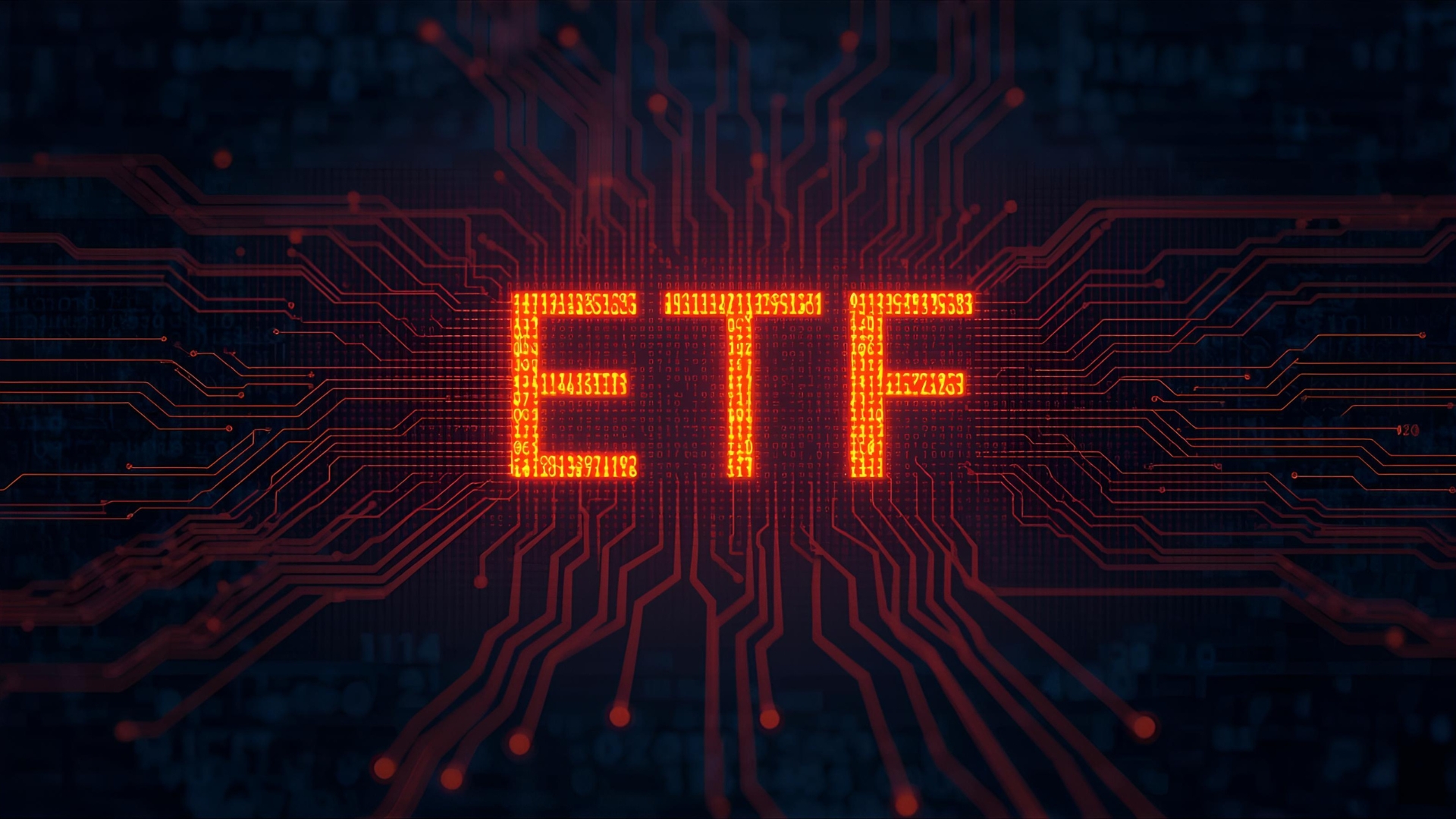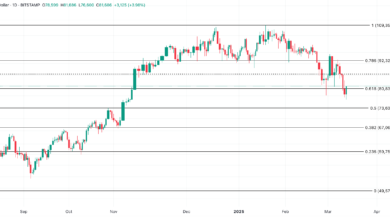
Bitcoin Price Prediction 2025 Will BTC Keep Soaring
Bitcoin price prediction 2025 catalysts, risks, and realistic scenarios based on ETFs, the halving, adoption trends, and on-chain data.
The phrase Bitcoin price prediction 2025 draws more attention than almost any other crypto query—and for good reason. In the past eighteen months, Bitcoin has crossed multiple historic milestones, from the approval of U.S. spot Bitcoin ETFs in January 2024 to the fourth Bitcoin halving in April 2024. Those two structural catalysts tightened supply and broadened demand, setting the stage for a consequential 2025.
As the year has unfolded, BTC has printed new all-time highs—first in July 2025 above $118,000, and again in early October 2025 over $125,000—before consolidating as markets weigh macro conditions, ETF flows, and on-chain dynamics.If you’re searching for a data-grounded BTC forecast rather than hype, this guide breaks down the key drivers behind a Bitcoin outlook for 2025.
We’ll explain how the halving compresses sell-side pressure, why ETF demand changes the market structure, which on-chain and macro signals matter, and how to frame bull, base, and bear scenarios for the rest of the year. The goal is a realistic, readable playbook that avoids over-optimization while keeping Bitcoin price prediction 2025 naturally woven through the analysis.
The 2024 halving and its 2025 ripple effects
The halving is Bitcoin’s pre-programmed supply shock: every ~210,000 blocks, the block subsidy cuts in half, reducing new issuance and increasing scarcity. The most recent halving occurred in April 2024, cutting the block reward from 6.25 BTC to 3.125 BTC. Historically, halvings don’t cause instant price spikes; instead, they recalibrate the medium-term supply/demand balance and often precede cyclical uptrends as markets digest the new issuance regime.
Why does this matter for a Bitcoin price prediction in 2025? Because 2025 is the first full year operating under the post-halving issuance schedule, when the reduction in miner sell pressure is fully felt. In a market where the supply curve is protocol-defined and the maximum supply is capped at 21 million coins, every halving increases stock-to-flow scarcity, which many analysts treat as a long-run tailwind for price—though it’s not a short-term trading signal and should be used with caution.
The ETF effect: structural demand meets a finite supply
The January 2024 approval of eleven spot Bitcoin ETFs in the United States lowered the friction for traditional investors to gain BTC exposure. This change is not just narrative; it’s plumbing. With spot ETFs, demand flows can translate directly into underlying Bitcoin purchases held by fund custodians, potentially shifting the market’s baseline bid. For long-horizon Bitcoin price predictions for 2025, ETF net creations and redemptions serve as a crucial barometer for sustained demand.
The combination of tightening supply after the halving and institutional on-ramps via ETFs helps explain why Bitcoin notched fresh highs in July 2025 and again in October 2025. Whether those highs persist depends on macro liquidity, risk appetite, and continued ETF inflows—factors we unpack below.
What the 2025 highs tell us—and what they don’t
Bitcoin clearing a prior ceiling is informative but not determinative. Making a new ATH around $118,000 in July 2025 and then surpassing $125,000 in October 2025 confirms strong cyclical momentum and expanding participation, but it doesn’t guarantee a straight-line trajectory. Markets often test breakout zones, revisit high-volume nodes, and oscillate with macro headlines. For traders and investors forming a Bitcoin 2025 forecast, the lesson is to respect trend strength while planning for volatility bands rather than single-point targets.
On-chain supply dynamics the quiet driver beneath price

Because Bitcoin’s issuance is algorithmic, on-chain data offers unusually transparent insights. A few supply-side themes matter throughout 2025:
Long-term holders and the free float
As coins migrate into long-term storage—cold wallets, ETF custodians, and corporate treasuries—the effective free float shrinks. Post-halving, miner sell pressure also declines in absolute BTC terms, tilting the balance further toward demand. Media reports throughout 2025 have highlighted large transfers into custodial and long-term holding addresses, consistent with the idea that a growing share of supply is “sticky.” While any single transfer doesn’t prove a thesis, the pattern supports a constructive Bitcoin outlook under steady demand.
Scarcity frameworks and stock-to-flow
The stock-to-flow (S2F) model treats Bitcoin like a scarce commodity whose price trends upward as its S2F increases after each halving. Advocates point to the fixed 21 million cap and predictable issuance as foundations for this view. Critics note that S2F can diverge from market reality over long stretches. As a 2025 tool, S2F is best used as a background scarcity lens rather than a precise price target generator. It reminds us that, over time, fewer new coins meet a potentially growing wall of demand.
How much BTC is already mined
As of mid-2025, over 93% of all Bitcoin had already been mined, leaving a relatively small tail of issuance that decelerates from here. This figure underscores why marginal demand changes can swing price disproportionately in a thin free float environment—a crucial consideration when thinking about the rest of 2025.
Macro backdrop liquidity, rates, and risk appetite
A credible Bitcoin price prediction 2025 must grapple with macro forces. Bitcoin has increasingly behaved like a high-beta macro asset during liquidity cycles, amplifying both risk-on surges and risk-off drawdowns. If global financial conditions ease, credit spreads remain benign, and equities stay buoyant, Bitcoin tends to benefit as investors reach for growth and digital-gold diversifiers. Conversely, a sharp tightening of liquidity, a risk shock, or regulatory uncertainty can push BTC into corrective phases even amid favorable on-chain trends. While we won’t anchor this forecast on any single macro datapoint, the message for 2025 is practical: map your BTC thesis to your view on liquidity and growth.
Technical context levels, momentum, and market structure
Technical analysis is not prophecy, but it helps translate flow into structure. After printing new highs in July and October 2025, BTC carved out higher value areas and established support near former resistance. In a trending year, the most constructive patterns are shallow pullbacks that hold above prior breakout ranges, along with rising longer-term moving averages and broad market participation (measured via ETF volumes and spot exchange turnover). For investors using a Bitcoin 2025 forecast to plan entries, laddering into weakness and scaling on confirmation has historically reduced regret compared to all-at-once buys at euphoric peaks.
Scenario analysis for 2025 bear, base, and bull
No single number captures the uncertainty embedded in a Bitcoin price prediction for 2025. Scenario analysis provides a more honest framework by tying outcomes to drivers.
Bear case: fragile liquidity and fading flows
In the bear case, global liquidity tightens and risk assets wobble. ETF net redemptions increase, miners sell more into rallies to cover costs, and news flow dampens institutional appetite. Price action under this path would likely feature failed breakout retests, lower highs, and a migration back into the prior high-volume range. On-chain, you’d expect a modest uptick in short-term holder distribution and less accumulation. While a deep cyclical breakdown appears less likely given 2024–2025 supply constraints, a meaningful drawdown from highs is always possible in a high-volatility asset like BTC.
Base case: chop with an upward bias
In the base case, ETF inflows and outflows roughly offset, macro conditions are mixed but not toxic, and the post-halving supply reduction keeps pressure tilted to the upside. Price behavior in this scenario would feature range expansion attempts that often succeed after consolidations, with pullbacks finding buyers near prior breakout regions. This is the “grind higher” path—less dramatic than the bull case, but friendly to disciplined dollar-cost averaging and trend-following strategies.
Bull case: sustained demand meets rigid supply
In the bull case, ETF creations remain positive, institutional allocators increase target weights, and long-term holders keep shrinking the free float. Add constructive macro (benign inflation, steady growth, supportive liquidity), and you get air pockets higher as new highs beget further systematic buying. Technically, BTC would log higher highs and higher lows, with shallow drawdowns and rising participation from both ETFs and spot venues. The July and October highs would then be stepping stones, not ceilings.
Also Read: Bitcoin Price Prediction What to Expect in 2025 and Beyond
How to read ETF and halving data without overfitting

One reason Bitcoin price prediction 2025 content veers into over-optimization is the temptation to force-fit models. A better approach is pragmatic triangulation:
Triangulate supply, flows, and macro
Use issuance data from the halving to understand the structural sell-side. Watch ETF creations/redemptions as a clean read on mainstream demand. Overlay macro liquidity to gauge how risk appetite modulates flows. No single line tells the whole story, but the trio provides a sturdy dashboard.
Respect timeframes
A weekly or monthly lens suits investors analyzing post-halving dynamics and ETF adoption. Intraday volatility can obscure medium-term progress. Keep your Bitcoin outlook timeframe aligned with your decision horizon to avoid whipsaw.
Avoid one-number predictions
Markets punish false precision. Rather than a single “end-of-year price,” lean on scenario bands and risk management rules. Your sizing, stop discipline, and rebalancing cadence often matter more than the perfect target.
What 2025’s new highs imply for adoption
Two consecutive ATHs within one cycle—July and October 2025—signal that adoption is broadening across investor types. Spot ETFs in particular have made Bitcoin accessible in retirement accounts, advisory platforms, and institutional mandates that previously avoided direct custody. While BTC remains volatile, the direction of travel is toward mainstream integration alongside traditional assets. That structural shift supports a constructive multi-year Bitcoin forecast, independent of month-to-month fluctuations.
Risks that could derail a bullish 2025
Even in a strong year, risks deserve equal airtime:
Regulatory surprises
Although U.S. spot ETFs cleared a historic hurdle in January 2024, evolving rules around custody, accounting, and market structure can still shake sentiment. Significant enforcement actions or adverse legislation in large jurisdictions could cool flows and widen spreads temporarily.
Macro shocks
A sharp growth scare, liquidity withdrawal, or flight to cash can weigh on risk assets, pulling BTC down even when on-chain indicators look healthy. Bitcoin’s digital-gold narrative sometimes helps during inflationary scares, but correlations can flip in stress.
Market structure and leverage
When new highs invite aggressive leverage, even modest pullbacks can trigger liquidations. Monitoring funding rates, ETF premium/discount behavior, and major exchange open interest helps identify overheated conditions.
Putting numbers to narratives: a reasoned 2025 range
Anchoring a Bitcoin price prediction 2025 requires humility and guardrails. Considering the post-halving supply reduction, ongoing ETF adoption, and evidence of expanding participation at the July and October highs, a base-case approach frames the remainder of 2025 as a higher-volatility, upward-biased range. In plain English: expect sizable swings inside an expanding channel rather than a smooth line. The critical levels to watch are prior ATH zones established this year and the highest-volume consolidation areas created during summer and early autumn. If ETF creations remain positive and macro doesn’t deteriorate, revisiting or modestly extending the October 2025 highs is plausible; if flows stall and liquidity tightens, deeper range tests should be anticipated.
How investors can approach the rest of 2025
Long-term allocators
For investors building multi-year exposure, the thesis hinges on scarcity, adoption, and portfolio diversification. The halving hardens scarcity, ETFs lower access friction, and ongoing institutional participation broadens the holder base. Dollar-cost averaging into weakness and periodically rebalancing can reduce behavioral errors. Use a risk budget you can live with through 50% drawdowns, because even bullish paths can include sharp corrections.
Active traders
For traders, 2025’s regime is trend-friendly but headline-sensitive. Respect levels around the July and October highs, monitor ETF flow reports, and let risk controls do the heavy lifting. In a market where the free float shrinks as coins migrate to long-term storage, moves can accelerate, making position sizing and stop placement more important than picking the perfect entry.
Final thoughts: balancing conviction and flexibility
The most compelling Bitcoin price prediction 2025 blends structural conviction with tactical flexibility. Structurally, the 2024 halving and 2024–2025 ETF approvals have tightened supply and widened demand, a powerful combination that already produced multiple all-time highs this year. Tactically, the path forward will likely alternate between rallies and consolidations as macro and flows wax and wane. If you anchor your plan to risk management, scenario bands, and a clear timeframe, you can benefit from Bitcoin’s upside potential without being hostage to a single number.
Conclusion
Bitcoin entered 2025 with scarcity rising after the halving and access expanding thanks to spot ETFs. Those twin pillars contributed to new highs in July and October 2025, validating the idea that Bitcoin is maturing within global portfolios even as it remains volatile. A realistic Bitcoin price prediction for 2025 favors a range-based, upward-biased view, contingent on steady ETF demand and cooperative macro conditions. The smarter bet is not on a single target but on a robust process: track supply, watch flows, respect volatility, and size positions accordingly. If those elements stay aligned, Bitcoin’s long-term digital-gold story has room to run beyond 2025.
FAQs
Q: Did the 2024 halving really matter for Bitcoin’s 2025 price?
A: Yes. The April 2024 halving reduced new issuance from 6.25 to 3.125 BTC per block, lowering miner sell pressure into 2025. While not an instant catalyst, it tightened the medium-term supply/demand balance that underpins this cycle’s strength.
Q: How significant are the U.S. spot Bitcoin ETFs to price?
A: They are structurally important. The January 2024 approvals created a regulated wrapper that channels mainstream demand directly into underlying BTC, changing market plumbing and broadening participation throughout 2025.
Q: What were Bitcoin’s new highs in 2025?
A: Bitcoin first set an ATH in July 2025 above $118,000 and later surpassed $125,000 in October 2025, reflecting strong flows and expanding participation. As always, subsequent pullbacks are normal in a trending market.
Q: How many bitcoins are left to be mined?
A: As of mid-2025, roughly 93% of the total supply had been mined, leaving a small and steadily slowing issuance tail toward the 21 million cap. This scarcity magnifies the impact of demand changes.
Q: Is stock-to-flow still useful for 2025 predictions?
A: It’s a helpful scarcity framework but not a precision tool. S2F highlights that halving increases Bitcoin’s stock-to-flow ratio over time, which historically coincided with higher prices, but markets can diverge for long periods. Use it alongside flow and macro data.







